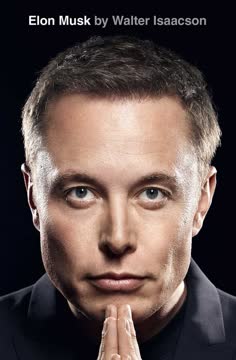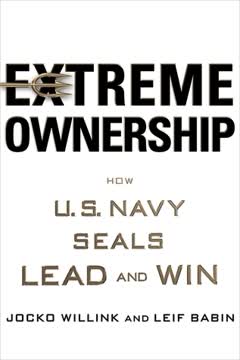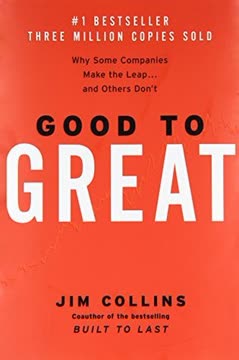Key Takeaways
1. Effective hiring is the foundation of successful management
Management is about getting work done through others, but in order to manage productively you must first learn how to hire effectively.
Hiring impacts everything. The success of your team, department, and ultimately your own career hinges on your ability to hire the right people. Poor hires lead to decreased productivity, increased turnover, and management headaches. Effective hiring, on the other hand, sets the stage for a high-performing team that can achieve great things.
Key hiring principles:
- Hire for ability, motivation, and teamwork
- Look for problem-solvers who can anticipate, prevent, and resolve issues
- Seek candidates with relevant technical skills and transferable professional skills
- Ensure cultural fit and alignment with company values
- Take time to thoroughly evaluate candidates - rushing leads to mistakes
By mastering the art of hiring, you lay the groundwork for successful management. The time and effort invested in finding the right people will pay dividends through increased productivity, innovation, and team cohesion.
2. Define job deliverables and problems to be solved
You have to know what you are looking for if you want to have any hope of finding it.
Clear expectations are crucial. Before you can hire effectively, you must have a thorough understanding of the job's responsibilities, deliverables, and the problems it exists to solve. This allows you to identify the skills, experience, and qualities needed in an ideal candidate.
Steps to define the job:
- Identify key responsibilities and expected outcomes
- Determine critical problems to be anticipated, prevented, and solved
- List required technical skills and relevant transferable skills
- Define measurable performance standards
- Consider how the role fits into the larger organizational context
By clearly defining the job, you create a roadmap for both the hiring process and future performance management. This clarity helps you ask more targeted interview questions, evaluate candidates objectively, and set new hires up for success once they join the team.
3. Screen candidates efficiently using resumes and phone interviews
Even when you are not working in a technology field, you should always consider candidates who exhibit strong technology skills and be wary of people who do not seem to have adapted to the digital age.
Efficient screening saves time. With potentially hundreds of applicants for a single position, it's crucial to have a system for quickly identifying the most promising candidates. This allows you to focus your time and energy on thoroughly evaluating only the best prospects.
Effective screening techniques:
- Resume review: Look for relevant experience, skills, and achievements
- Applicant Tracking Systems (ATS): Use technology to filter candidates based on keywords and qualifications
- Phone interviews: Conduct brief initial screenings to assess basic qualifications and communication skills
- Delegation: Train trusted team members to assist with initial screenings
Implement a multi-step screening process that progressively narrows the candidate pool. This ensures that by the time you reach in-person interviews, you're dealing with a small group of highly qualified individuals. Remember to stay open-minded about non-traditional backgrounds or experiences that might bring valuable perspectives to the role.
4. Structure interviews to assess ability, motivation, and teamwork
As the interviewer, you sit in the position of power, and as such you set the tone. With the right tone, a candidate feels as respected and relaxed as possible. This is your goal, because a relaxed candidate will give you more information, and a candidate who experiences an atmosphere of professional respect is more likely to accept a job.
A structured approach yields better results. By organizing your interviews into distinct phases focused on ability, motivation, and teamwork/manageability, you ensure a comprehensive evaluation of each candidate. This structure also allows for fair comparisons between candidates.
Three-phase interview structure:
- Ability: Assess technical skills and problem-solving capabilities
- Motivation: Evaluate enthusiasm for the role and long-term career goals
- Teamwork/Manageability: Gauge cultural fit and ability to work well with others
Within each phase, use a mix of question types:
- Behavioral questions: "Tell me about a time when..."
- Situational questions: "How would you handle..."
- Technical questions: Specific to job requirements
- Open-ended questions: Allow for detailed responses
By following a consistent structure across all interviews, you gather comparable information on each candidate, making the final decision-making process more objective and data-driven.
5. Ask targeted questions to evaluate candidates comprehensively
People respect what you inspect, not what you expect.
Thoughtful questions reveal true capabilities. The questions you ask during an interview can make the difference between uncovering a candidate's real potential and merely scratching the surface. Prepare a mix of questions that delve into technical skills, problem-solving abilities, motivation, and cultural fit.
Effective questioning techniques:
- Use open-ended questions to encourage detailed responses
- Ask for specific examples of past experiences and achievements
- Probe deeper with follow-up questions to clarify or expand on answers
- Include questions that assess soft skills and emotional intelligence
- Tailor questions to the specific requirements of the role
Sample questions:
- "Describe a complex problem you solved in your previous role."
- "How do you prioritize tasks when facing multiple deadlines?"
- "Tell me about a time you had to work with a difficult team member."
- "What motivates you to excel in your work?"
- "How do you stay current with industry trends and developments?"
Remember to listen actively and take notes during the interview. Pay attention not just to what candidates say, but also to how they say it, their body language, and the questions they ask you in return.
6. Consider corporate life cycle when hiring for senior positions
Finding someone who has successfully operated in all these phases is rare indeed, as each demands different approaches and skills.
Company stage influences hiring needs. When filling senior-level positions, it's crucial to consider where your company is in its life cycle (startup, growth, maturity, decline, or turnaround). Different stages require leaders with different skill sets and experiences.
Matching candidates to company stage:
- Startups: Look for versatile, hands-on leaders comfortable with ambiguity
- Growth: Seek executives who can build systems and scale operations
- Mature: Prioritize efficiency and process optimization experience
- Decline/Turnaround: Value change management and strategic repositioning skills
Consider candidates' past experiences:
- Have they worked in companies at similar stages?
- Can they adapt their leadership style to your current needs?
- Do they have the vision to guide the company through its next phase?
By aligning senior hires with your company's current stage and future goals, you increase the likelihood of a successful transition and long-term value creation.
7. Conduct thorough reference checks before making an offer
Making offers that get rejected every now and then happens to everyone, but regular rejections can become a career growth impediment.
Verify claims and gather insights. Reference checks serve two crucial purposes: confirming the accuracy of a candidate's claims and gaining additional perspective on their work style and capabilities. Thorough reference checks can help prevent costly hiring mistakes.
Effective reference check process:
- Obtain written permission from the candidate
- Prepare a list of specific questions based on the role requirements
- Contact multiple references, including former managers and colleagues
- Ask about performance, strengths, weaknesses, and areas for improvement
- Listen for hesitations or lukewarm responses that might indicate concerns
Sample reference check questions:
- "How would you rate the candidate's skills in [specific area]?"
- "Can you describe the candidate's approach to problem-solving?"
- "How did the candidate handle conflict or challenging situations?"
- "Would you rehire this person? Why or why not?"
Remember that reference checks are not just a formality - they're an opportunity to gain valuable insights that can inform your final hiring decision and help set the new hire up for success.
8. Empower new hires and existing employees through regular performance reviews
Most people want to succeed, because succeeding at work is a big part of succeeding in life.
Continuous feedback drives improvement. Regular performance reviews, or Comprehensive Performance Reviews (CPRs), are a powerful tool for helping both new hires and existing employees succeed. By providing frequent, structured feedback and goal-setting opportunities, you create a culture of continuous improvement and empowerment.
Implementing effective CPRs:
- Set clear performance standards for each role
- Conduct reviews frequently (weekly for new hires, monthly or quarterly for others)
- Use a structured format that covers key performance areas
- Encourage two-way communication and self-evaluation
- Focus on both strengths and areas for improvement
- Set specific, measurable goals for the next review period
Benefits of regular CPRs:
- Faster onboarding and productivity for new hires
- Improved performance and engagement for all employees
- Early identification and resolution of potential issues
- Stronger manager-employee relationships
- Clearer alignment between individual and organizational goals
By investing time in regular, meaningful performance discussions, you create a supportive environment where employees feel valued and motivated to excel. This, in turn, leads to higher productivity, lower turnover, and a stronger, more cohesive team.
Last updated:
Review Summary
Knock 'em Dead - Hiring the Best receives positive reviews for its comprehensive approach to hiring, covering everything from creating job profiles to post-hire management. Readers appreciate the abundance of example interview questions and practical advice for both interviewers and interviewees. Some find it particularly useful for first-time managers or those needing a refresher. While a few reviewers note that some content may be outdated, many still consider it a valuable resource for structuring interviews and preparing for job searches. The book's simplicity and practicality are frequently praised.
Similar Books







Download PDF
Download EPUB
.epub digital book format is ideal for reading ebooks on phones, tablets, and e-readers.






